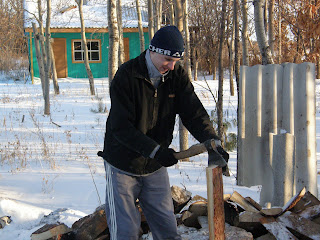The stork and crane nests were all surveyed this week and to date the statistics are as follows:
We have a total of 8 known stork nests within the Park. The eggs should be close to hatching based on the timing they were observed sitting at the nests. We had the opportunity to check one nest early in the week and there were three eggs. We lost two nests in the Park this season; one from the fires mentioned in a previous post and another that was lost in strong winds. Another nest was discovered in the park, which had also burned in a recent fire, but it is unclear whether or not this nest was occupied during the fire…
Outside of the Park, we have confirmed another five nests.
The red-crowned cranes that had gone to nest earlier last month lost their nest. The cause for this remains unclear. We have been unable to locate a nest to look for clues. This is odd, given we knew the location of where the nest should have been. A similar situation had occurred the previous year and our suspicions are that this pair may have some type of behavioral issue that interferes with the successful completion of nesting. So, this means no red-crowned crane chicks this year at the Park. As of yet, we do not know of any red-crowned cranes nests outside of the Park.
One pair of white-naped cranes has hatched out chicks. We have been unable to see the chicks in the tall grass, but there is no reason to suspect that there are any problems! We collected data on the nesting site to give us a better understanding of the variables they need to lead to a successful hatch. Two other nests are known of in the Park – one was lost to predators early in the incubation stage and the other nest still only has eggs (see the photo of the female hidden on the nest).
While walking around to check on the status of these nests, I encountered a sad scenario, a female deer had been shot by poachers and it was just about to give birth to twins. Poaching is a big problem in
We also had a nice rare migrant pass through the park this week: the little curlews. A group of eight was seen feeding amongst the many golden-plovers that are also passing through at this time.
The week ended with several groups of volunteers who came to help clean debris around the headquarters as well as plant trees. We had a great time with them and as always appreciate their hard work and dedication to the Park.
I wanted to end the weeks notes with a small segment on an animal that has mystified several visitors that have come to the Park….the Siberian sleeper. Much dinner time discussion has been centered around this crazy fish, who, legend has it, hibernates in the ice…(I still need to do my homework on this little guy to disentangle myth and fact!!)







































.JPG)
 The frog eggs that were laid in the wetlands several weeks ago have hatched. There are now little tadpoles swimming in the shallower portions of the wetlands! We took several of the tadpoles to the nature center, so that the visiting school children could watch
The frog eggs that were laid in the wetlands several weeks ago have hatched. There are now little tadpoles swimming in the shallower portions of the wetlands! We took several of the tadpoles to the nature center, so that the visiting school children could watch 









